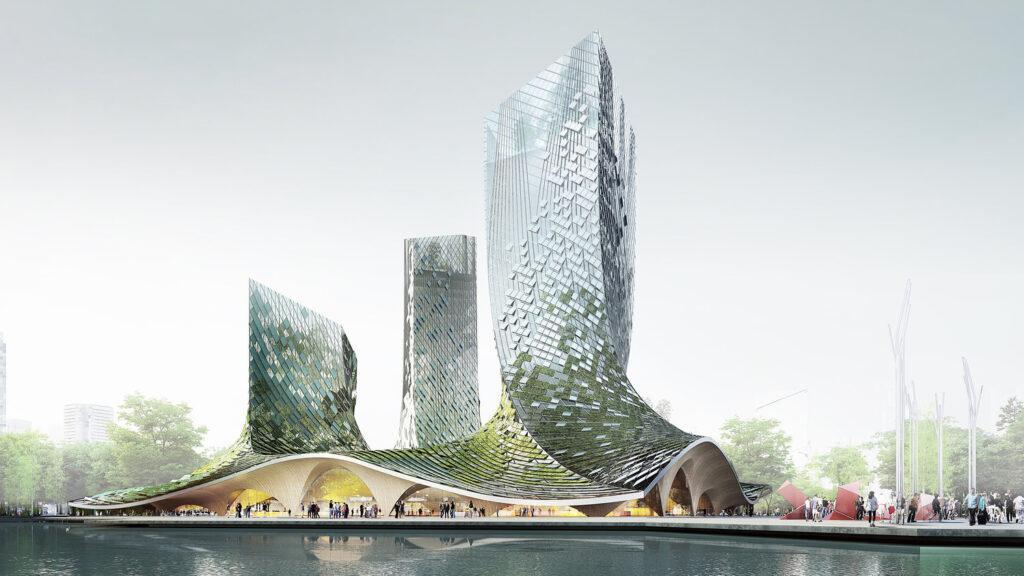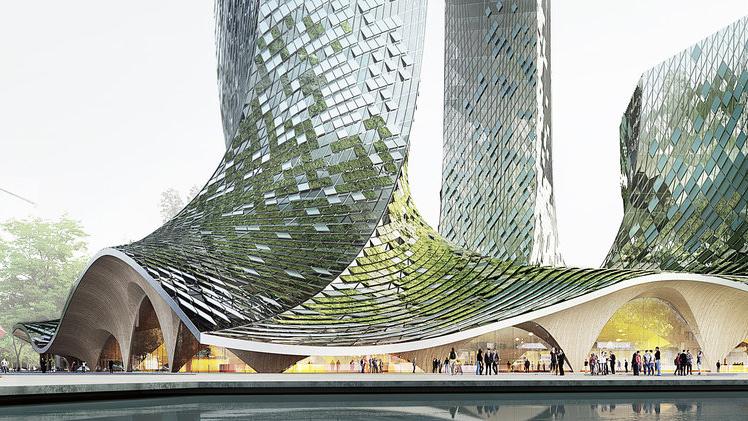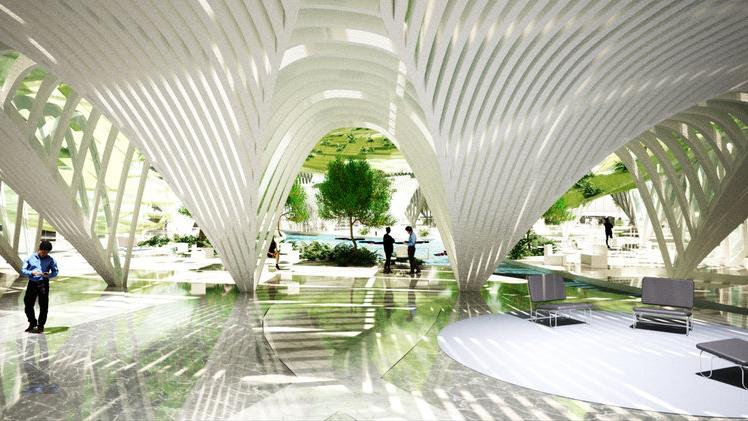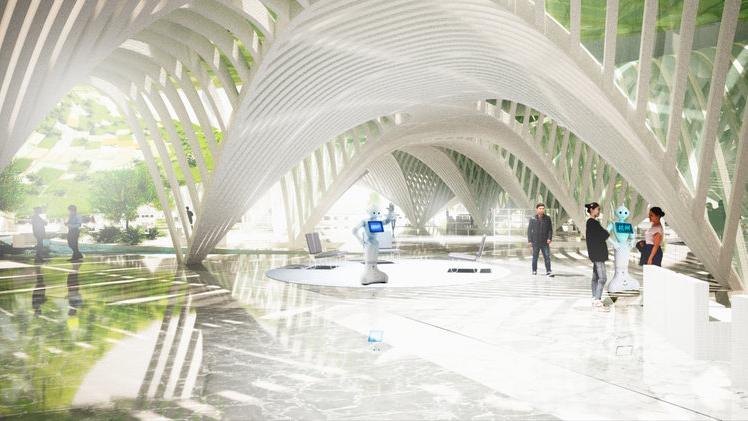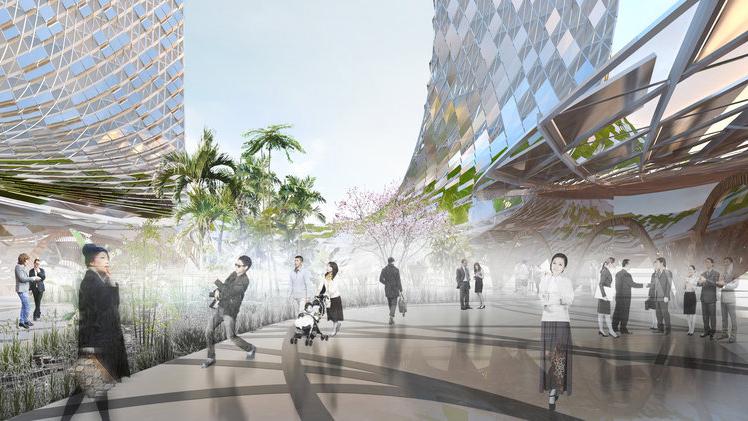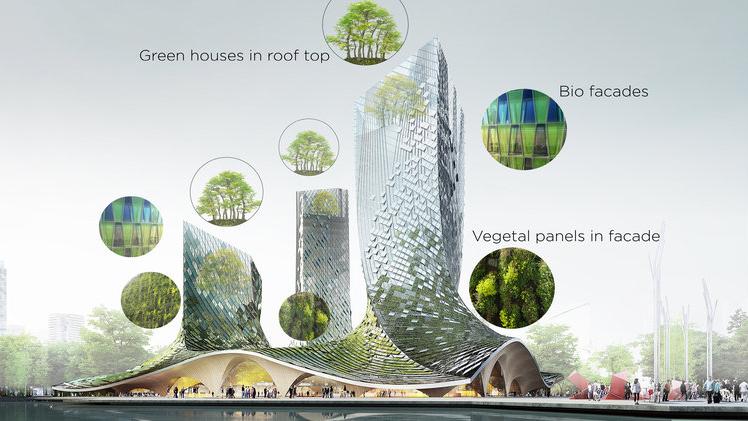Built with algae
French architects have chosen China as the location for the world’s greenest building. A significant role will be played by algae, which seems to make almost any dream come true. No wonder the project is named French Dream Towers.
It’s safe to say that the French Dream Towers, set to be built in the Chinese city of Hangzhou, are actually not all that amazing. They are simply four intertwined office towers. Rather cool, but not really outstanding. Other towers are far more impressive, but these ones boast their very own algae…
Greening of a special kind
Other architecture projects are eagerly anticipated because their design is so spectacular, but here it is the material used for the gigantic facades of the four towers that is simply extraordinary: instead of merely being planted with greenery, they will literally be overgrown with algae. For the concept, French studio XTU Architects has actually developed panels impregnated with micro-algae which will be used as cladding for the glass towers.
Of course, the studio responsible for the French Dream Towers didn’t go to all this trouble just to make them look good. So the architects hurriedly presented the project in its proper light: in other words, they issued a press release.
French Dream Towers with new technology
This reads: “The studio’s design for French Dream Towers includes its patent-pending ‘bio-facade’ technology. The culture of micro-algae on the building facade is a process developed by XTU for several years.”
In simple terms, this means that the quite spectacular concept integrates an algal layer that meets all needs. So let’s take a closer look:
- Insulation.
The algae are supposed to equip the building with natural insulation. This is said to be particularly important for glass towers, as they absorb warmth rapidly and also release it again quickly as well. From today’s perspective, either way algae is reputedly only a sensible solution in certain conditions. - Carbon offset.
Algae are also reported to offset the carbon footprint, the building’s environmental impact, through the absorption of carbon dioxide and production of oxygen. - Algae as a product.
The algae can also be collected for use in medicine or cosmetics. Algae are becoming increasingly popular for use in beauty products due to their high protein and nutrient density, while the mucus secreted by the photosynthetic organism is reported to have moisturizing qualities.
And as the creative finishing touch from an architectural perspective, this living facade apparently works a bit like a biological perpetual motion machine: “This technology allows symbiosis: the bio-facade uses the thermal building to regulate the culture temperature of algae and at the same time these facades allow a much better insulation of buildings.” In other words, the two elements are mutually stimulating. Or at least this is the plan.
Not totally new territory
The XTU planners are on thoroughly safe terrain here, as the territory is by no means unchartered: several years ago engineering office Arup served as pioneers for algae facades, with the world’s first algae-powered building in Hamburg. The micro-algae growing in its glass elements are not only able to provide shade, but can also be used for the production of renewable energy.
In those places on the French Dream Towers where no algae can grow, integration of solar panels and glasshouses with vegetation is planned. These will be found at the tops of the glass towers, for example. Small groups of trees are also envisaged here in order to filter the building’s air and provide small woodland oases for residents.
Sensible tower layout
The shape of the towers also adopts a sustainable approach: the undulating platform linking the towers at their base is designed in such a way that rainwater flows away at the sides, through the opening in the middle and into the basin underneath. The architects explain: “Hangzhou is a city where water is very present. We want to continue, update and highlight this tradition.”
Aside from the sustainability aspect, each of the four towers will fulfil its own function that is in some way dedicated to “French expertise”, according to the press release. For instance, one tower will house a French restaurant and a bar. Another will accommodate a hotel and a spa. The third tower is dedicated to art, equipped with its own gallery and accommodation for the artists.
French monument in China?
Last but not least, the highest and last of the French Dream Towers is intended to become the “French Tech Hub”. It is supposed to offer space for start-ups and both larger and smaller companies – primarily ones with a sustainable background, of course.
However, although this project is certainly forward-looking, it still lacks – despite its large number of green aspects – what is presumably the most essential splash of colour: the green light for construction. We’ll be keeping an eye on it.
Text: Johannes Stühlinger
Translation: Rosemary Bridger-Lippe
Images: XTU Architects
